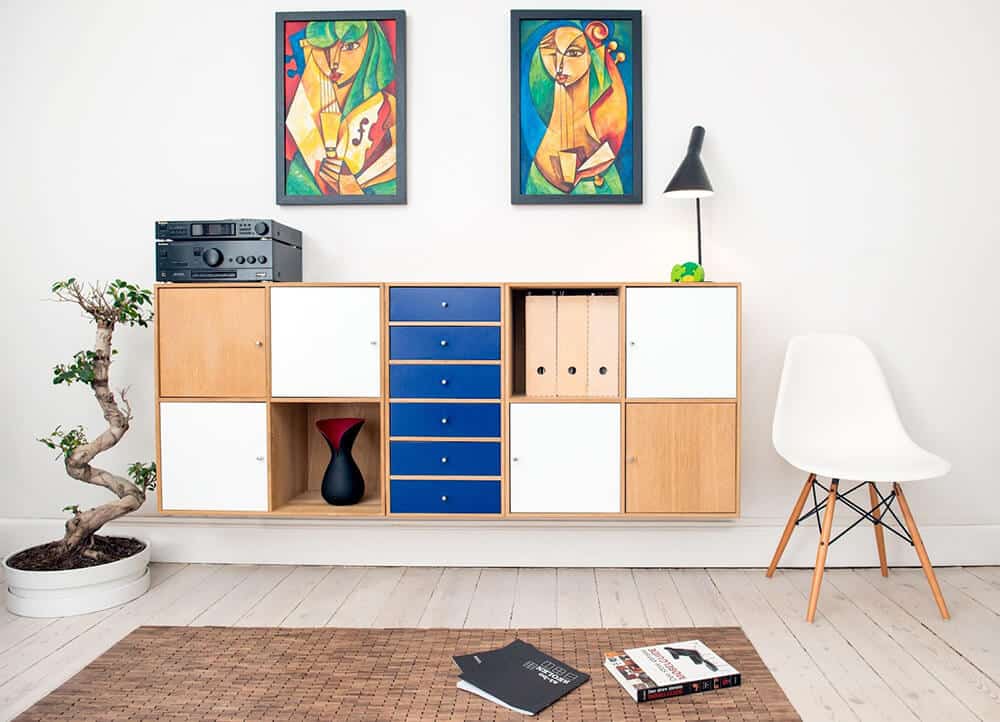
Should I Take Out a Personal Loan to Buy Furniture?
When considering a personal loan to buy furniture, weighing the pros and cons of this financing option is essential.
This article will focus on personal loans, discussing their benefits and types while providing expert advice on applying for one. Furthermore, we’ll explore how using a personal loan to buy furniture can be advantageous or disadvantageous, depending on your financial situation. We’ll also discuss alternative options for purchasing furniture without relying solely on personal loans.
Understanding Personal Loans
Personal loans are unsecured forms of borrowing that offer fixed interest rates over a predetermined repayment period. After researching lenders and comparing their offerings, choose the one that best suits your needs based on factors such as interest rates, fees, and repayment terms.
Without needing any collateral, such as a house, your credit score is still essential in finding out if you can get better terms on a loan. Reliable online lenders like Level offer personal loans at very attractive rates and with a quick application process.
Read More: How Much Can I Borrow with a Personal Loan?
Unsecured loans without collateral requirements
The beauty of a personal loan lies in its lack of collateral requirements. Unlike secured loans like mortgages or auto loans, where you risk losing your property if you default on payments, personal loans don’t require any assets as security. This makes them more accessible to borrowers who may not have valuable possessions they can put up against the borrowed amount.
Importance of credit scores in qualifying for loans
Your credit score plays a crucial role when applying for furniture financing options, including personal loans. Lenders use this three-digit number to assess how likely you are to repay the borrowed money responsibly – essentially gauging your financial trustworthiness before approving or denying applications.
- Poor Credit – If your credit score isn’t stellar (below 670), you might struggle with getting approved by traditional banks or private lenders offering low-interest rate deals; however, you can still explore bad credit loan options that cater specifically to borrowers with less-than-perfect scores.
- Good Credit – If your score is in the good range (670-739), you’ll likely qualify for personal loans at competitive interest rates, but not necessarily the best ones available on the market.
- Excellent Credit – Borrowers boasting excellent credit scores (740 and above) enjoy access to top-tier financing deals featuring low-interest rates and flexible repayment terms – a testament to their proven track record of responsible money management.
Read More: Can I Take Out a Personal Loan with a Low Credit Score?
In summary, while unsecured personal loans offer an opportunity for those looking to finance costly furniture purchases without collateral requirements, it’s essential to assess whether your credit score will allow you access to favorable lending conditions before applying outright.
If not, consider alternative solutions like saving up or exploring in-store financing options instead of taking out a high-interest loan that may prove difficult later down the line when making repayments becomes challenging due to unforeseen circumstances arising unexpectedly during repayment periods.
Key Takeaway: Personal loans are a form of unsecured borrowing that doesn’t require collateral, making them accessible to those without valuable assets. However, credit scores play an essential role in determining eligibility for favorable lending conditions, with borrowers boasting excellent credit scores enjoying top-tier financing deals featuring low-interest rates and flexible repayment terms.
Weighing the Pros and Cons of Furniture Financing Options
Before opting for a personal loan to buy furniture, ask yourself if the purchase can wait until you’ve saved enough without needing financial assistance. It may be wiser to hold off on buying additional items if you already own essentials like beds and dining tables while focusing on saving up instead.
Saving vs. financing furniture purchases
When it comes to saving versus financing your furniture purchases, there are several factors to consider.
- Interest rates – With a personal loan, the interest rate you pay can vary based on your credit score and other factors. If you can save up for the costly furniture purchase, you’ll avoid paying interest altogether.
- Budget impact – Taking out a personal loan means adding another monthly payment obligation to your budget. Saving up allows for more flexibility in managing finances.
- Credit score effects – Applying for loans or using in-store financing options could negatively affect your credit score due to hard inquiries and increased debt levels.
Prioritizing essential furniture items
If furnishing an entire home seems overwhelming, prioritize essential pieces such as beds, sofas, and dining sets before moving on to less crucial items like accent chairs or decorative accessories.
Read More: Personal Loans for Home Renovations
In-Store Financing Alternatives
Before jumping into a personal loan for your furniture purchase, consider exploring many furniture stores’ in-store financing alternatives. Consider looking into in-store financing options, as they can provide you with a more flexible and potentially economical solution to acquire the furniture of your dreams without incurring extra debt.
Interest-free Payment Plans from Retailers
A popular option among savvy shoppers is the interest-free payment plan that some retailers offer. In-store financing enables shoppers to spread out the cost of their purchases instead of paying it all in one go. The best part? If you can pay off your balance within the specified deadline (usually 6-12 months), you won’t have to pay any interest.
However, be aware that if you fail to meet this deadline or miss a payment, hefty penalties, and high-interest rates may apply.
Comparing Store-specific Financing with Traditional Loans
To determine whether in-store financing is right for your situation, compare it against traditional loans such as unsecured personal loans. Here are some factors to remember.
- No-interest Loan In-Store – As mentioned earlier, many retailers offer no-interest loan options provided balances get paid off within specified deadlines.
- Credit Score Impact – Unlike personal loans, which typically require good credit scores for approval, store-specific financing might be more lenient towards those who need to explore bad credit loan options.
- Fees & Penalties – While personal loans and in-store financing options may have associated fees, you typically don’t pay financing fees with store-specific plans. However, late payments or failure to meet the interest-free deadline can result in costly penalties.
Comparing these factors can help you determine if in-store financing or a personal loan is better for your furniture purchase.
Key Takeaway: Before taking out a personal loan to buy furniture, consider exploring in-store financing options retailers offer. Compare store-specific financing with traditional loans based on factors such as credit score impact and fees/penalties before making an informed decision. Interest-free payment plans are popular among savvy shoppers, but be aware of penalties and high-interest rates if deadlines are missed.
Home Equity Loans: Borrowing Against Your Property Value
If you’re a homeowner who’s built substantial equity into your property, you may be considering using it to finance that dreamy furniture set.
With a home equity loan, you can borrow against the value of your home, providing funds for costly furniture purchases. Before deciding to use home equity for furniture purchases, weighing the advantages and risks is important.
Advantages of Using Home Equity for Furniture Purchases
- Lower interest rates – Compared to unsecured personal loans or in-store financing options, home equity loans typically offer lower interest rates due to their secured nature.
- Tax-deductible interest – Sometimes, the interest paid on a home equity loan can be tax-deductible if used for qualifying expenses like home improvements. Check with a tax professional or visit the IRS website for more information.
- Larger loan amounts – Since these loans are based on your property’s value and available equity, they often allow borrowers access to larger sums than other financing methods might provide.
Risks and Consequences of Defaulting on a Home Equity Loan
Borrowing against your property isn’t without its drawbacks; failure to make timely payments could lead creditors to seek debt recovery efforts through foreclosure – yikes. Here are some potential consequences worth considering.
- Potential loss of your home – The most significant risk associated with a home equity loan is the possibility of losing your property if you fail to make repayments. Defaulting on a home equity loan could potentially result in property foreclosure.
- Decreased financial flexibility – Adding another monthly payment to your budget might strain your finances and limit future borrowing opportunities, especially if interest rates rise or housing values decline.
- Fees and closing costs – Home equity loans often come with fees such as appraisal charges, origination fees, and closing costs that could increase the overall cost of borrowing. Make sure you understand these expenses before committing.
Key Takeaway: Homeowners with substantial equity in their property may consider using a home equity loan to finance furniture purchases. This option offers lower interest rates, tax-deductible interest, and larger loan amounts. Still, it comes with risks such as potential loss of the property, decreased financial flexibility, and additional fees and closing costs. It’s essential to weigh the benefits against the potential consequences before committing to this type of borrowing.






Sorry, the comment form is closed at this time.